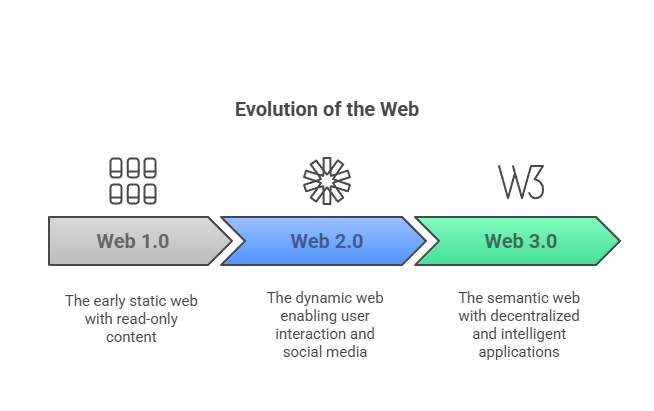Web 3.0 represents the third generation of internet services, emphasizing decentralization, artificial intelligence, and user-centric data control. Unlike its predecessors, Web 3.0 integrates machine-readable data, blockchain technology, and semantic frameworks to create a more intelligent, interconnected digital ecosystem. This article explores its origins, core components, applications, and what lies ahead.
What Is Web 3.0?
Web 3.0, often termed the “Semantic Web,” shifts from static web pages to dynamic, context-aware applications. Coined by John Markoff in 2006, it focuses on creating a decentralized architecture where users own their data. Key technologies like RDF (Resource Description Framework), OWL (Web Ontology Language), and SPARQL (SPARQL Protocol and RDF Query Language) enable machines to interpret and connect data meaningfully.
For example, searching for a car in Web 3.0 could prompt an AI-driven platform to analyze your location, budget, and preferences to deliver personalized results. This contrasts sharply with Web 2.0, where search engines rely on keywords rather than contextual understanding.
The Evolution of the Web: From 1.0 to 3.0

Web 1.0: The Static Web (1990s–Early 2000s)
- Characteristics: Read-only content, basic HTML pages, limited interactivity.
- Examples: Early websites like Yahoo! Directory.
Web 2.0: The Social Web (Mid-2000s–Present)
- Characteristics: User-generated content, social media platforms, cloud computing.
- Examples: Facebook, YouTube, and WordPress (learn more about WordPress here).
Web 3.0: The Decentralized Web (Emerging)
- Characteristics:
- Semantic data interpretation.
- Blockchain-based decentralization.
- AI-driven personalization.
- Examples: Ethereum, Solid (Tim Berners-Lee’s data sovereignty project).
| Aspect | Web 1.0 | Web 2.0 | Web 3.0 |
|---|---|---|---|
| Interactivity | None | High (user-generated) | AI-driven, contextual |
| Data Control | Centralized servers | Corporate-controlled | User-owned, decentralized |
| Technology | Basic HTML | AJAX, APIs | Blockchain, Semantic Web |
Key Features of Web 3.0
1. Semantic Web Capabilities
Machines analyze data relationships using RDF and OWL, enabling advanced search accuracy. For instance, querying “best budget laptops” returns results based on performance benchmarks and pricing rather than generic lists.
2. Decentralization via Blockchain
Platforms like Ethereum eliminate intermediaries, allowing peer-to-peer transactions. Decentralized apps (dApps) operate on distributed networks, reducing censorship risks.
3. AI and Machine Learning Integration
AI algorithms personalize experiences, such as Netflix’s recommendation engine or chatbots resolving customer queries without human intervention.
4. Ubiquitous Connectivity
Internet of Things (IoT) devices seamlessly interact within Web 3.0 ecosystems. Smart homes, for example, adjust thermostats or lighting based on user behavior patterns.
Types of Web 3.0 Applications
1. Decentralized Social Networks
Platforms like Mastodon and Diaspora let users control data without corporate oversight. These networks resist censorship and prioritize privacy.
2. Semantic Search Engines
Tools like Solid leverage linked data to deliver precise answers. Imagine a search engine understanding “Find events near me this weekend” by analyzing your location and preferences.
3. NFT Marketplaces
Web 3.0 enables digital ownership through NFTs (non-fungible tokens). Platforms like OpenSea and Rarible thrive on blockchain authenticity.
4. DAOs (Decentralized Autonomous Organizations)
DAO members vote on governance decisions using tokens. Examples include MakerDAO, which manages the DAI stablecoin.
Pros and Cons of Web 3.0
| Pros | Cons |
|---|---|
| Enhanced data privacy | Complex adoption for non-tech users |
| Reduced corporate monopolies | Scalability challenges |
| AI-driven personalization | Regulatory uncertainty |
| Transparent transactions | Energy-intensive blockchains |
| User-owned content | Early-stage infrastructure |
Web 3.0 Technologies Shaping the Future
1. Blockchain and Smart Contracts
Ethereum’s smart contracts automate agreements without intermediaries. For instance, DeFi platforms enable lending/borrowing directly between users.
2. Semantic Metadata
RDF tags help machines understand content context. A recipe site using RDF could suggest meals based on dietary restrictions.
3. AI/ML Algorithms
Natural Language Processing (NLP) tools like GPT-4 power chatbots and content generators.
4. Interoperable Standards
Cross-chain protocols (e.g., Polkadot) connect disparate blockchains, fostering seamless data exchange.
The Future of Web 3.0
Web 3.0’s trajectory hinges on resolving scalability, energy efficiency, and regulatory hurdles. Potential developments include:
- Metaverse Integration: Virtual worlds like Decentraland blending AR/VR with blockchain.
- Enhanced IoT Security: Decentralized networks protecting smart devices from breaches.
- AI Ethics Frameworks: Transparent AI models to prevent algorithmic bias.
Businesses adopting Web 3.0 early can leverage tools like Top 10 Email Marketing Plugins to enhance customer engagement. Meanwhile, creators might explore earning via Instagram using decentralized platforms.
Web 1.0 vs. Web 2.0 vs. Web 3.0
| Feature | Web 1.0 | Web 2.0 | Web 3.0 |
|---|---|---|---|
| Interaction | Read-only | Read-Write | Read-Write-Own |
| Data Control | Centralized | Platform-controlled | User-owned |
| Technology | HTML/CSS | AJAX, Social Media | Blockchain, AI, Semantic Web |
| Example | Static websites | Facebook, YouTube | Ethereum, IPFS |
Explore more about WordPress optimization or learn how to boost SEO rankings for your Web 3.0 projects. For insights into AI’s role in content creation, visit The Truth About AI Content and Google Rankings.

